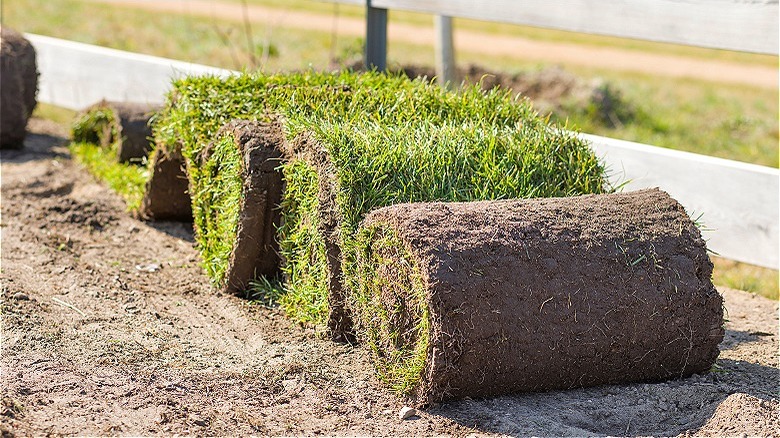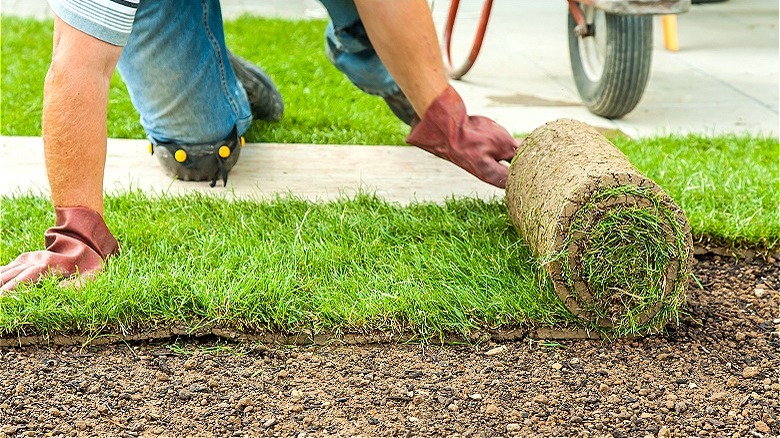Do you have a larger portion of your yard that needs new grass and want the simplest option(s) to get a new lawn in place? Perhaps you’re hosting a family gathering in a few weeks and don’t want to have a bare yard. Sod can be the solution because it offers a virtually instant appearance. However, there are a few drawbacks to using sod in your yard instead of grass seed or hydroseeding, such as the significantly higher cost of sod and the need for proper installation with less room for error.
Seeding and hydroseeding a lawn allows for the development of individual grass seeds, one blade at a time. Such methods take time and also require careful planning and watering over the coming weeks. Sod, meanwhile, which is typically sold in rolls of pre-grown grass and an inch or two of soil, seems ready to place and go once you get it home. While sod certainly works well for creating an instant lawn, one drawback is that without proper care, it’ll fail; and if it does, it often means a much higher cost to replace it than if you were to start your lawn with grass seed.
Comparative cost is one drawback to sod

The biggest drawback of using sod to start and grow a lawn is the cost, which can range from $1 to $2 per square foot, and sometimes as much as $3.50 per square foot. If you’re installing a new lawn, that could be around $2,000 to remove the existing material, prepare the soil, and install the new sod. Typically, sod installation is done by a professional to ensure it goes well, but you can reduce the cost you’ll pay if you install it yourself.
There are a few other ways to lower your costs, though, including choosing materials carefully. For example, if you select a higher-end, specific species of grass, you’ll spend more. Alternatively, you could choose instead a classic blend of grasses that do well in your area. Being less picky when it comes to sod keeps more money in your pocket.
Further, while you may be able to purchase sod from a garden center, try to find wholesalers in the area that sell to the public instead, as they’ll charge a fraction of the cost most often. You can also ask a lawn-care company to purchase the sod for you and allow you to install it. If you don’t have to sod the entire yard, also inquire about the availability of ruminants, which are smaller pieces of sod that you can use to fill in open gaps, often at a lower price point than large rolls of sod.
The drawback (and potential savings) of pro installation

As said, another drawback to installing sod in your yard is that it could mean paying for professional installation. When it comes to sod, you’ll want to avoid (at all costs) your new sod failing to grow. Because of this risk of failure, working with a professional who can guarantee their work can potentially save you money in the end.
With this said, laying sod is a DIY project you could take on yourself. If you do, just be sure you’re well aware of the steps to properly installing sod in a yard. For one, you’ll want to start to plan your project well ahead of installation day.
No matter which way you go, though — professional or DIY — once the sod is installed in your yard, it’s vital you keep your new sod lawn well-watered. The first two and a half months or so are the most important; this is when the roots will set. During this time, regular watering (twice a day) is what you’ll need to provide to give your new sod lawn its best chance to thrive.



